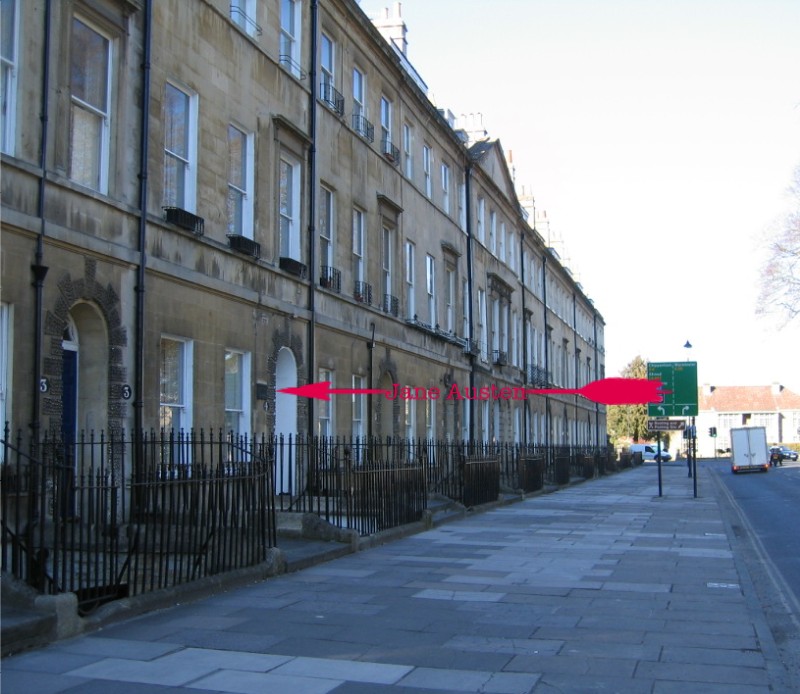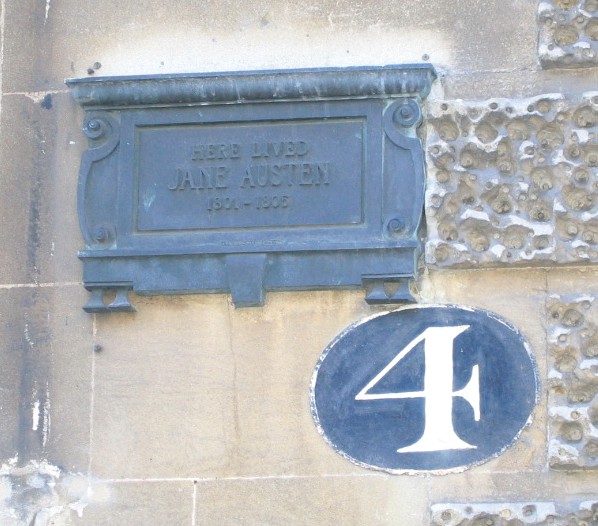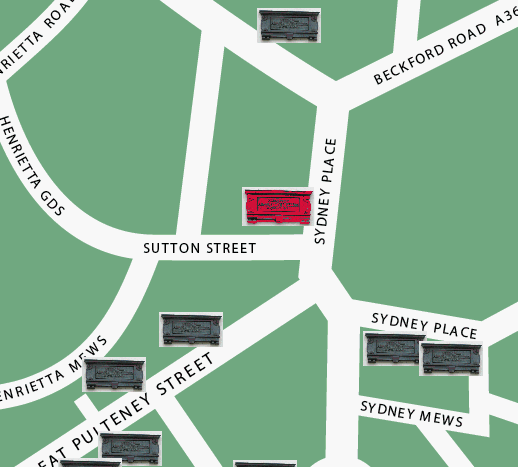Jane Austen
Who was she?
Wikipedia:
Jane Austen (16 December 1775 – 18 July 1817) was an English
novelist whose works of romantic fiction set among the gentry have
earned her a place as one of the most widely read and most beloved
writers in English literature.
Why was she in Bath?
Austen's parents,
George Austen
(1731–1805), and his wife, Cassandra (1739–1827), were members of
substantial gentry families. George was descended from a family of
woollen manufacturers which had risen through the professions to
the lower ranks of the landed gentry. Cassandra was a member of
the prominent Leigh family; they married on 26 April 1764 at
Walcot Church in Bath. From 1765 until 1801, that is, for much of
Jane's life, George Austen served as the rector of the Anglican
parishes at Steventon, Hampshire.
Jane first came to Bath with to stay with her Aunt and Uncle, the
Leigh-Perrots, at Number 1 The Paragon in the summer of 1797. She
returned with her mother and brother Edward in the summer of 1799.
They stayed for a month at no. 13, Queen Square.
In December 1800, Rev. Austen unexpectedly announced his decision
to retire from the ministry, leave Steventon, and move the family
to Bath. While retirement and travel were good for the elder
Austens, Jane Austen was shocked to be told she was moving from
the only home she had ever known. An indication of Austen's state
of mind is her lack of productivity as a writer during the time
she lived at Bath. She was able to make some revisions to
Susan, and she began and then
abandoned a new novel,
The
Watsons, but there was nothing like the productivity of
the years 1795–99.
The Austen family lived at 4, Sydney Place (below) for three years
until their lease expired. They moved to Green Park Buildings,
where
George Austen died in
January 1805. Afterwards they briefly lived at 25, Gay Street,
then in Trim Street before moving to Hampshire. Her final novels,
Persuasion and
Northanger Abbey, were
published in December 1817 after her death. They were both set
largely in Bath.


The text reads
"Here lived Jane Austen 1801 - 1805"
Location map of 4, Sydney Place

(c) 2025
Bath-Heritage.co.uk | Contact us|




